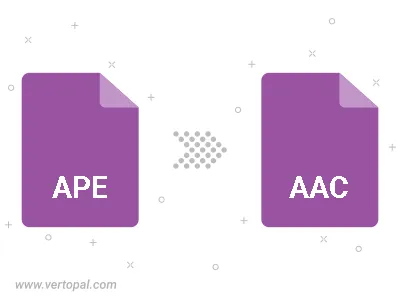Convert APE to AAC
Convert APE audios to AAC format, edit and optimize audios online and free.

The APE file extension, associated with Monkey's Audio, represents a lossless audio compression format designed to preserve original sound quality while reducing file size. Developed by Matthew T. Ashland in 2000, Monkey's Audio employs advanced algorithms to achieve efficient compression without data loss, making it a preferred choice for audiophiles and digital archiving. APE files support metadata tagging and are widely used in music production, storage, and distribution. While offering superior compression ratios compared to other lossless formats, they require specific software or plugins for playback due to limited native support across mainstream media players.
Advanced Audio Coding (AAC) is a digital audio file format designed to provide superior sound quality and compression efficiency compared to older formats like MP3. Developed in the late 1990s by a consortium of companies, including Fraunhofer IIS, Dolby, and Sony, AAC has become the standard audio format for various platforms, including Apple's iTunes and YouTube. It is widely used in streaming, broadcasting, and multimedia applications due to its ability to deliver high-fidelity audio at lower bit rates, making it ideal for bandwidth-constrained environments.
Select any APE file from your device to start uploading it.
Check the file preview quickly and use APE to AAC tools if you need to change the conversion settings.
Wait a couple of seconds for the converter to do the hard job, then download your AAC file.

Trim & cut APE and convert it to AAC.
Convert APE to AAC and set the output channels to Mono (1.0) or Stereo (2.0).
To change APE format to AAC, upload your APE file to proceed to the preview page. Use any available tools if you want to edit and manipulate your APE file. Click on the convert button and wait for the convert to complete. Download the converted AAC file afterward.
Follow steps below if you have installed Vertopal CLI on your macOS system.
cd to APE file location or include path to your input file.Follow steps below if you have installed Vertopal CLI on your Windows system.
cd to APE file location or include path to your input file.Follow steps below if you have installed Vertopal CLI on your Linux system.
cd to APE file location or include path to your input file.